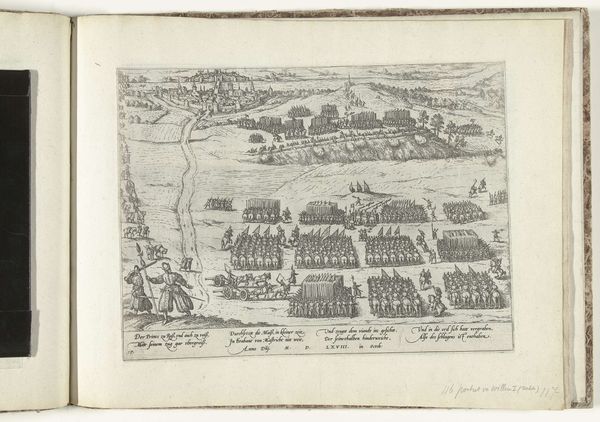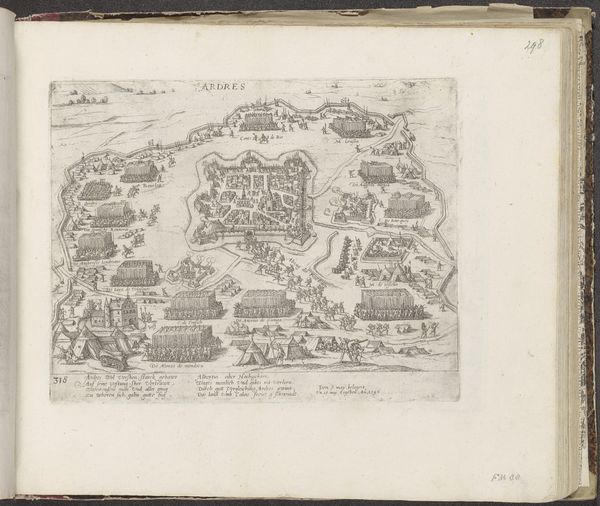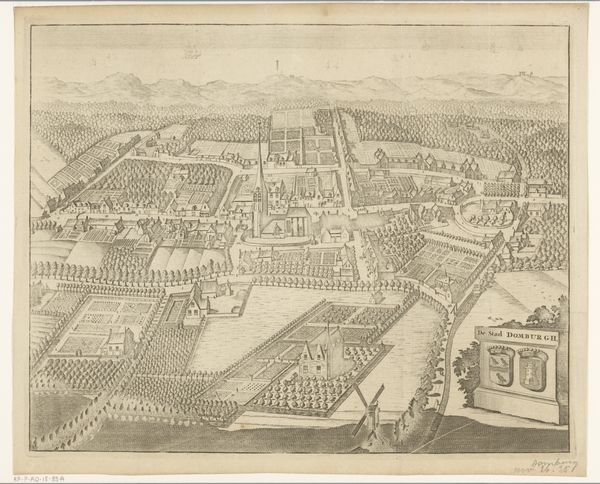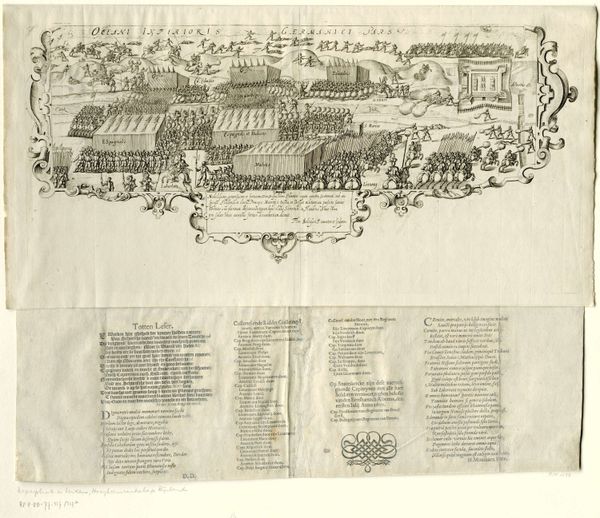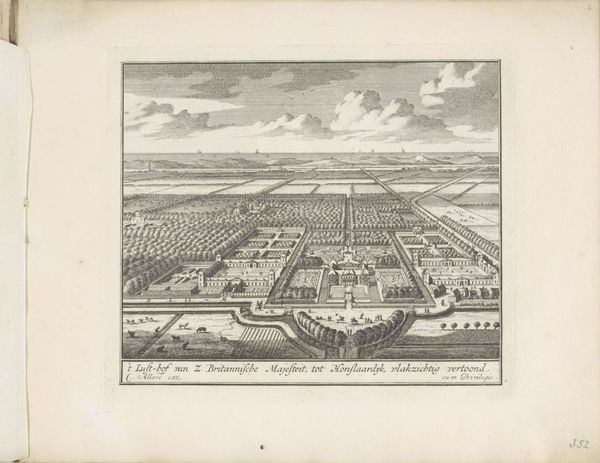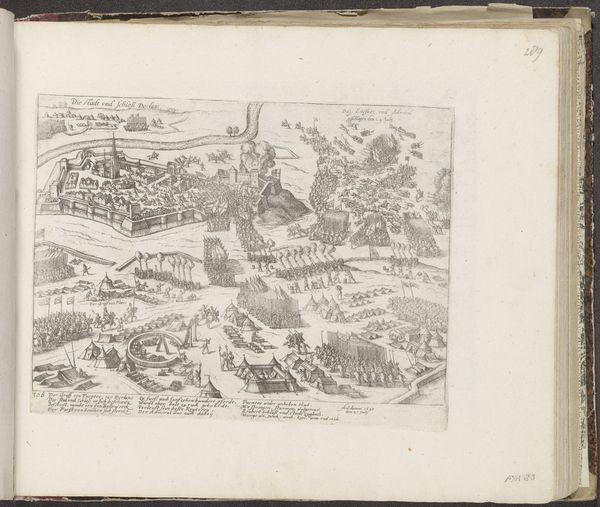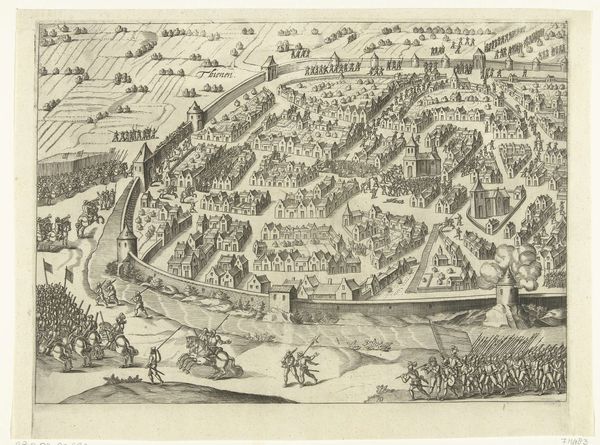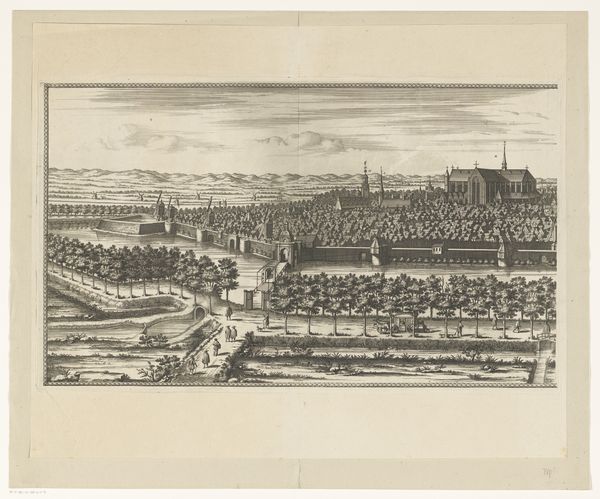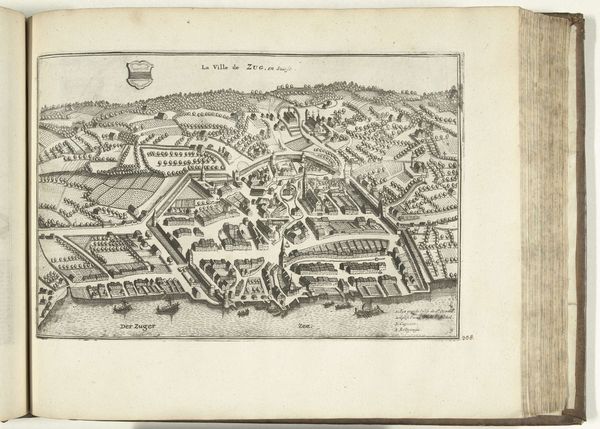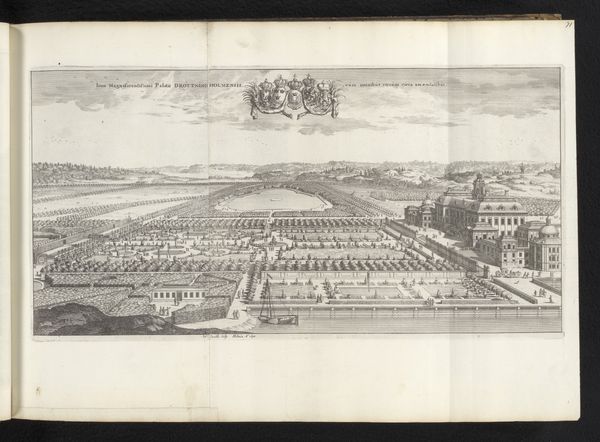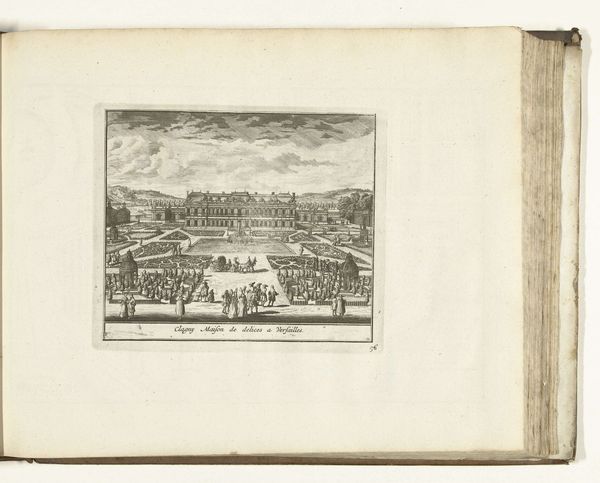
Slag bij de Leffingedijk tussen de Staatse troepen van Ernst Casimir van Nassau en de Spaanse van Albrecht van Oostenrijk, 1600 1600
0:00
0:00
florisbalthasarszvanberckenrode
Rijksmuseum
print, intaglio, engraving
#
baroque
# print
#
intaglio
#
history-painting
#
engraving
Dimensions: height 232 mm, width 475 mm
Copyright: Rijks Museum: Open Domain
Curator: Before us, we have "Slag bij de Leffingedijk tussen de Staatse troepen van Ernst Casimir van Nassau en de Spaanse van Albrecht van Oostenrijk, 1600," a print made by Floris Balthasarsz van Berckenrode around 1600. It's housed right here at the Rijksmuseum. Editor: My first impression is this looks incredibly organized for a battlefield! All these little boxes of soldiers… It's like a meticulously arranged board game, if board games involved so much death and drama. Curator: Exactly! This print offers us a strategic overview rather than an emotional portrayal of battle. The detailed rendering via engraving emphasizes process and technique. Look closely: each set of combatants, named—"Espagnoli," "Frisii"—reveals insights into military logistics and 17th-century modes of representation. The material artifact of the print itself connects us to this historical moment, doesn’t it? It was made for distribution, for consumption. Editor: I get that sense of detachment. Yet there's something charming, in a weird way, about how tiny and uniform everyone is. Each little scratch is someone's drama… reduced. The swirls around the image makes it feel both important, and yet a story far away from me now. Makes me feel reflective. I wonder if its flatness, its stark presentation, helps to tell a "factual" story more easily. Curator: The baroque aesthetic combined with intaglio prints were key here—intaglio's capacity to deliver exact details through reproducible lines directly meets the need for distribution to a wide audience in 1600. Each pull gives access to, ideally, unchanged information, enabling political discourse. Consider, as well, its Baroque aesthetic—this theatricality heightens the gravity, doesn't it? Editor: Maybe "theatricality" sells it better... But my eyes can only dart so much at all the busyness; I keep going back to thinking about what we consume today versus how knowledge like this was circulated then. What battle maps might be now—a real time tweet? I suppose it shows things haven't really changed, only the materials we use. Curator: A compelling consideration on art's ability to function as material culture through visual record, indeed. I will keep this question in mind as I investigate this intriguing artwork in the future. Editor: And me. It makes me wonder how the artist viewed the battlefield to make such an impactful document! Food for thought.
Comments
No comments
Be the first to comment and join the conversation on the ultimate creative platform.


